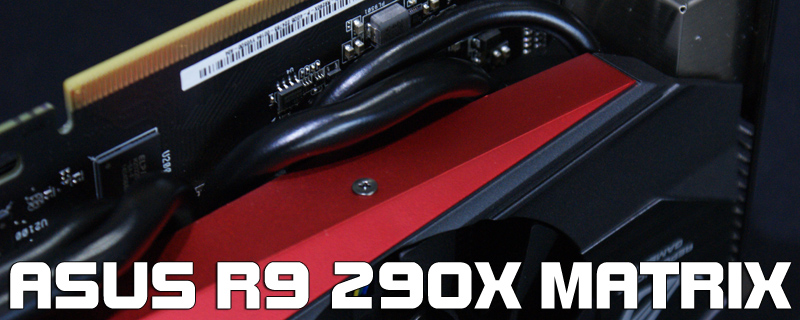ASUS R9 290X Matrix Platinum Review
Conclusion
So two ASUS Matrix cards that are almost identical in feature-set and looks. The GTX780Ti Matrix was a stormer, with excellent cooling, fantastic overclocking and great performance in every test. The R9 290X Matrix isn’t anywhere near as impressive.
In fact if anything we are more disappointed by the Matrix than we’ve been by a card for some time, especially considering how fantastic the GTX780Ti Matrix is. It didn’t seem to matter what test we run, the Matrix just isn’t offering enough extra performance to justify its positioning at the ultimate end the market. It’s designed for the most extreme overclocking enthusiast, those who demand world record scores. Or, perhaps, those who just wish the comfort that comes from the knowledge that they have the best version of a particular GPU that is available.
We fear either of those two groups of people could come away from the Matrix feeling a little underwhelmed for such a huge investment. We understand that there is an element of silicon lottery in any card. That receiving a great GPU or a poor one isn’t related to how much money you spend on the card, but rather just on the luck of the draw. Even allowing for that though the Matrix doesn’t quite cut it though. The cooler, whilst absolutely gorgeous to look at, is 11 degrees hotter than ASUS’ own DirectCU II card and a whopping 21°C hotter than the MSI Lightning. This heat severely limits the overclock you can attain, which is the entire point of such a high end card. Its just leaves a taste in our mouths that Asus is selling this card on subzero overclocking merits knowing hardly any of you are ever likely to test this theory out and the ones that do will have been given a box of these to speed bin anyways.
Those two cards provide the biggest problem for the Matrix. If you want a R9 290X that’s going to perform well on air then clearly the MSI Lightning is a better choice by such a margin that it’s over the horizon and out of sight. If you’re determined to own an ASUS R9 290X then the DirectCU II is cooler, a massive £75 cheaper and, in nearly every benchmark, faster too. Ah, we hear you cry, this is meant to be run under LN2 or some exotic, non-air, cooling option. By that token then the MSI Lightning (again) is a much better card and if you’re going to water cool it then you might as well save a ton of cash and get a reference model.
It’s a testament to how good the Hawaii XT GPU is, or perhaps extraordinarily lucky for ASUS, that all the disappointments of the Matrix still don’t diminish the underlying performance of the Radeon GPU. It’s hotter than many other R9 290X offerings, damn expensive and we can think of at least two cards that would empty our wallets long before we considered this. We know that there are a lot of you out there who don’t mind about the odd frame here and there, or just love the looks of this so much that you’re willing to pay the steep premium to have it in your rig. Unquestionably it looks fantastic. It’s gorgeous and the black heatpipes blend beautifully with the red and grey shroud to leave the card looking as awesome as any other one out there. There is still sufficient speed available that the R9 290X Matrix gets our OC3D Performance award because of the GPU alone and the sheer amount of extra bells and whistles Asus have bolted onto this to sound like a wet dream for all you budding subzero overclockers. For the air cooling and non overclocking crowd absolutely must empty your wallet on this card JUST for the way it looks we feel that in this instance the normal DCUII card would be a much wiser purchase.
Thanks to ASUS for supplying the R9 290X Matrix for review. Discuss your thoughts in the OC3D Forums.




